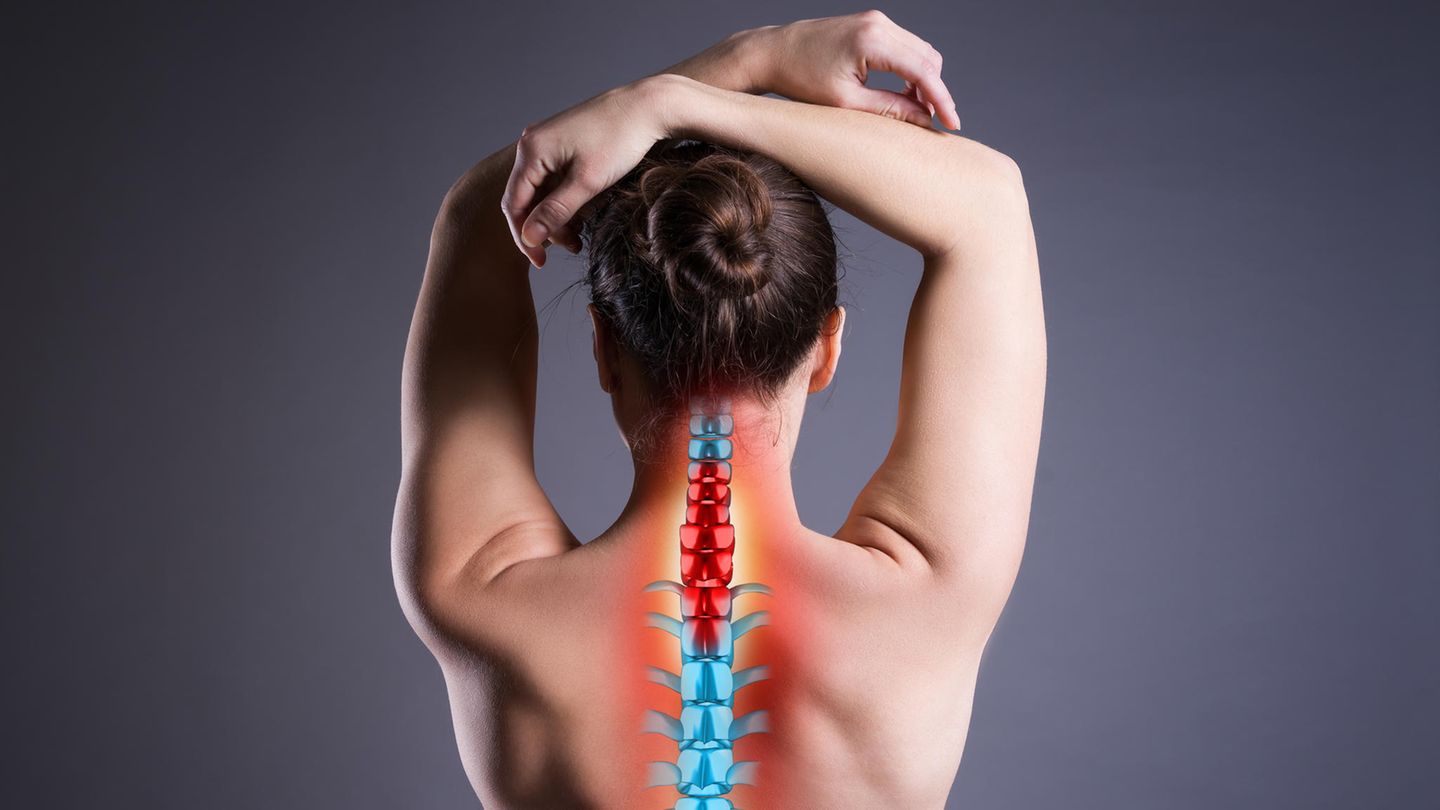Fascia runs through the entire body: it surrounds our muscles, making them stable and elastic. If the fibers stick together, we often suffer from problems in the back, neck and shoulder areas.
Table of contents
-
Recognizing sticky fascia: This is what you need to pay attention to
-
This is how you can loosen stuck fascia
All muscle fibers, muscle strands and muscle groups in our body are encompassed by. This is a type of net-like connective tissue that is very tear-resistant and yet extremely elastic. Its main task is to keep our musculoskeletal system as agile as possible. Due to a lack of exercise, stress, hyperacidity or a protective posture, the fascia can stick together or harden and thus cause problems in the back, neck and shoulder areas as well as in the joints. For this reason, special methods have been developed to loosen the fibers that are stuck together. Find out here how you can improve your muscular functionality and reduce pain.
Recognizing sticky fascia: This is what you need to pay attention to
Even though sticky fascia is the most common cause of pain in the entire back area, other health problems can also cause pain. An important indication of this is your skin, which reacts sensitively to pressure.
To find out whether there are disorders in the fascia system, proceed as follows: Take a fold of skin in the affected region between your fingers and carefully lift it. If you feel pain, sticky fascia is responsible. The diagnosis is even clearer if the skin fold in the pain-sensitive region is thicker – in this case, too much fluid has built up and the body can no longer remove it properly.
This is how you can loosen stuck fascia
With the introduction of the fascia roller, a new method was developed with which you can massage your muscles and connective tissue yourself – using only the strength of your own body. When used correctly, it is intended to relieve painful tension in the back, neck and shoulder areas. Without any medication or going to the doctor. Depending on which area you want to work on or loosen, there are different types of hard foam rollers.
How to use these correctly is demonstrated in various videos. Below we present a few sample videos for the respective training devices:
1. The fascia roller is the classic among hard foam training devices. It is available in different sizes and degrees of hardness, but its function is always the same – massaging the muscles and connective tissue. Regardless of whether you use the roller while standing or lying down: when used correctly, the roller can loosen sticky fascia and loosen hardened muscles. The smooth surface is just as suitable for the back as it is for the stomach, legs, buttocks and even the feet.
You can find out how to use the roller correctly in this video:
Tip: Alternatively, there is also fascia training for the back and neck as a book and on DVD.
2. The double ball is a combination of two fascia balls with which you work muscle strands in parallel. For this reason, the training device is particularly suitable for releasing sticky fascia and painful trigger points – i.e. muscle spasms – around the spine and neck with the help of a targeted massage. By using it correctly, you can also improve blood flow to the muscles so that the affected fascia can regenerate more quickly.
The double ball is available here.
You can find out how to train correctly with the double ball here:
3. The fascia ball is intended to selectively massage sticky fascia. Due to the small contact surface and the degree of hardness, trigger points in particular can be specifically treated and tense muscles can be relaxed. It is available in two different sizes – eight and twelve centimeters – so that the fascia ball can be used not only at specific points, but also over larger areas. Thanks to its handy size, the training device can be taken anywhere and can therefore also be used on the go (in the office or on vacation).
The ball is here.
This video shows how to use it correctly:
Tip: For optimal treatment, you can combine the training devices with each other. Here there is the set.
4. The Twister is for diehards. Thanks to its nubby surface, the targeted stimulation of individual muscle areas is particularly effective, but also more painful than other hard foam rollers. You can also use pressure and rotational movements to specifically treat sticky fascia and trigger points – whether standing or lying down, on the floor or on the wall.
The Twister is here.
This video shows how the Twister is used specifically:
Source: YouTube
Source: Stern
I’m Caroline, a journalist and author for 24 Hours Worlds. I specialize in health-related news and stories, bringing real-world impact to readers across the globe. With my experience in journalism and writing in both print and online formats, I strive to provide reliable information that resonates with audiences from all walks of life.




